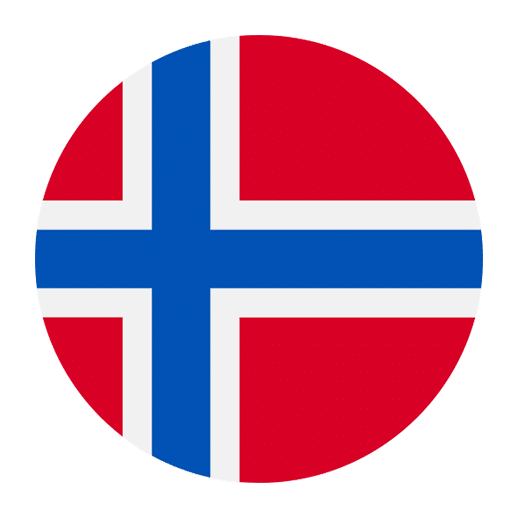Learning a new language can be a fascinating journey filled with discoveries and insights. One of the most intriguing aspects of language learning is understanding how different words can have similar pronunciations but entirely different meanings. In Norwegian, two such words are “vann” and “venn.” These words sound quite similar to English speakers but mean “water” and “friend,” respectively. This article aims to help you differentiate between these two words, providing not only their definitions but also examples and contextual usage to make your learning experience more robust.
Understanding the Basics
In Norwegian, the pronunciation of certain words can be tricky for English speakers. The words “vann” and “venn” are a perfect example of this. To an untrained ear, these two words might sound almost identical, but their meanings are worlds apart. Let’s break down each word individually.
Vann: The Essence of Life
The word “vann” in Norwegian means “water.” It’s one of the most fundamental words in any language because water is essential for life. Pronounced as /vɑn/, it is quite straightforward once you get the hang of it.
Here’s how you can use “vann” in a sentence:
– Jeg trenger vann. (I need water.)
– Vannet i denne elven er veldig rent. (The water in this river is very clean.)
– Har du noe vann å drikke? (Do you have any water to drink?)
The word “vann” can also appear in compound words. For example:
– Vannflaske (Water bottle)
– Vannmelon (Watermelon)
– Vannkraft (Hydropower)
Venn: The Joy of Companionship
On the other hand, “venn” means “friend” in Norwegian. This word is also incredibly important because friendships are a crucial part of human life. Pronounced as /vɛn/, it has a slight difference in vowel sound compared to “vann.”
Let’s look at some examples of how “venn” can be used in sentences:
– Han er min beste venn. (He is my best friend.)
– Jeg har mange gode venner. (I have many good friends.)
– Kan jeg få være din venn? (Can I be your friend?)
Similar to “vann,” “venn” can also be part of compound words:
– Barndomsvenn (Childhood friend)
– Vennskap (Friendship)
– Venninne (Female friend)
Spotting the Differences
While “vann” and “venn” might sound similar, there are distinct differences in their pronunciation and usage. The key difference lies in the vowel sounds.
– “Vann” has a longer /ɑ/ sound, almost like the ‘a’ in “father.”
– “Venn” has a shorter /ɛ/ sound, similar to the ‘e’ in “bed.”
To practice, try saying the following pairs of words out loud:
– Vann – Venn
– Vant (won) – Vent (wait)
– Vanlig (usual) – Vennlig (friendly)
By practicing these pairs, you can train your ear to distinguish between the subtle differences in vowel sounds.
Cultural Context and Usage
Understanding the cultural context of these words can also help in remembering their meanings and uses.
Water in Norwegian Culture
Norway is a country blessed with abundant natural water resources, from fjords and rivers to lakes and waterfalls. Water plays a significant role in Norwegian life, not only as a resource but also as a part of recreational activities like fishing, swimming, and boating. Therefore, the word “vann” is commonly used and holds substantial importance.
During your visit to Norway, you might hear:
– Kan jeg få et glass vann? (Can I have a glass of water?)
– Vannet er veldig kaldt om vinteren. (The water is very cold in the winter.)
Friendship in Norwegian Culture
Friendships in Norway, like in many other cultures, are cherished and valued. Norwegians may seem reserved initially, but they are known for forming deep, long-lasting friendships. The word “venn” is thus an integral part of social interactions.
You might hear phrases like:
– Vi har vært venner siden barndommen. (We have been friends since childhood.)
– En ekte venn er en skatt. (A true friend is a treasure.)
Practical Tips for Remembering
Here are some practical tips to help you remember the difference between “vann” and “venn”:
Visual Associations
Create visual associations in your mind. For “vann,” imagine a vast body of water like a lake or ocean. For “venn,” picture a close friend or a group of friends.
Mnemonics
Use mnemonics to aid your memory. For instance, you could think of “vann” as “very essential nature’s nectar” and “venn” as “very endearing nice neighbor.”
Practice with Native Speakers
Engage in conversations with native Norwegian speakers. This will not only help you practice pronunciation but also give you context on how these words are used in everyday life.
Exercises to Reinforce Learning
To solidify your understanding, try the following exercises:
Exercise 1: Fill in the Blanks
Complete the sentences with the correct word:
1. Jeg har en ny _______ i klassen min. (venn)
2. Kan du gi meg et glass _______? (vann)
3. Det er viktig å drikke mye _______ hver dag. (vann)
4. Hun er en god _______ av meg. (venn)
Exercise 2: Translation Practice
Translate the following sentences into Norwegian:
1. I need a friend.
2. The water is very cold.
3. She is my best friend.
4. Do you have any water?
Exercise 3: Pronunciation Practice
Record yourself saying the following pairs of words:
1. Vann – Venn
2. Vant – Vent
3. Vanlig – Vennlig
Listen to the recordings and compare them to native pronunciations available online or through language apps.
Conclusion
Mastering the subtle differences between “vann” and “venn” is a small but significant step in your journey to learning Norwegian. By understanding their meanings, practicing their pronunciations, and using them in context, you’ll be well on your way to becoming more proficient in the language. Remember, the key to language learning is consistent practice and exposure. So, keep practicing, stay curious, and enjoy the process of discovering the beautiful Norwegian language.

